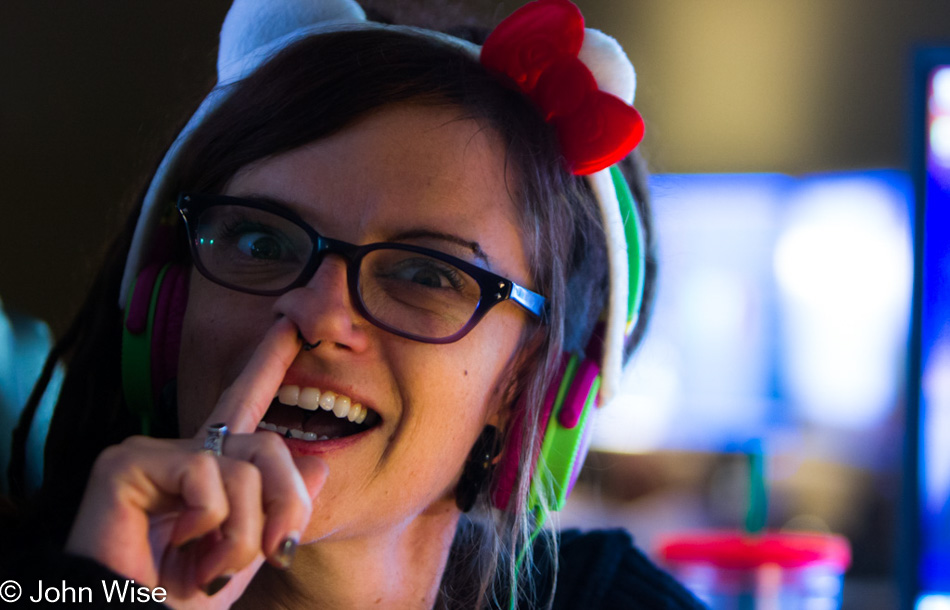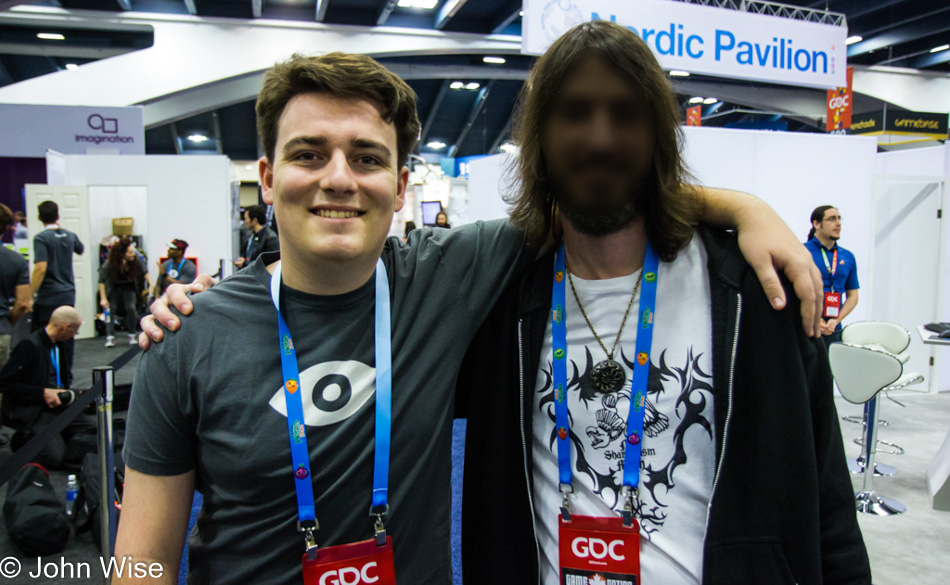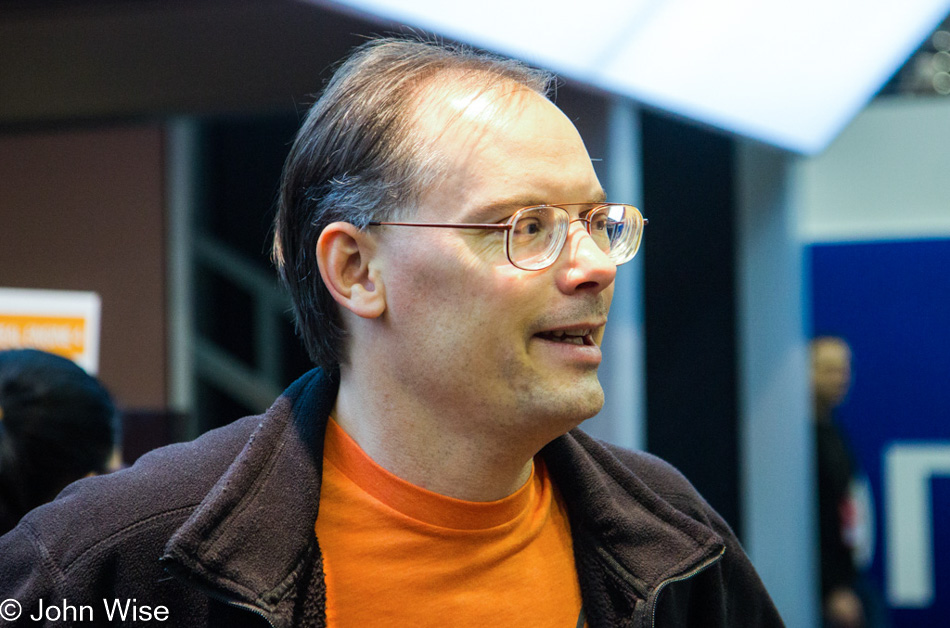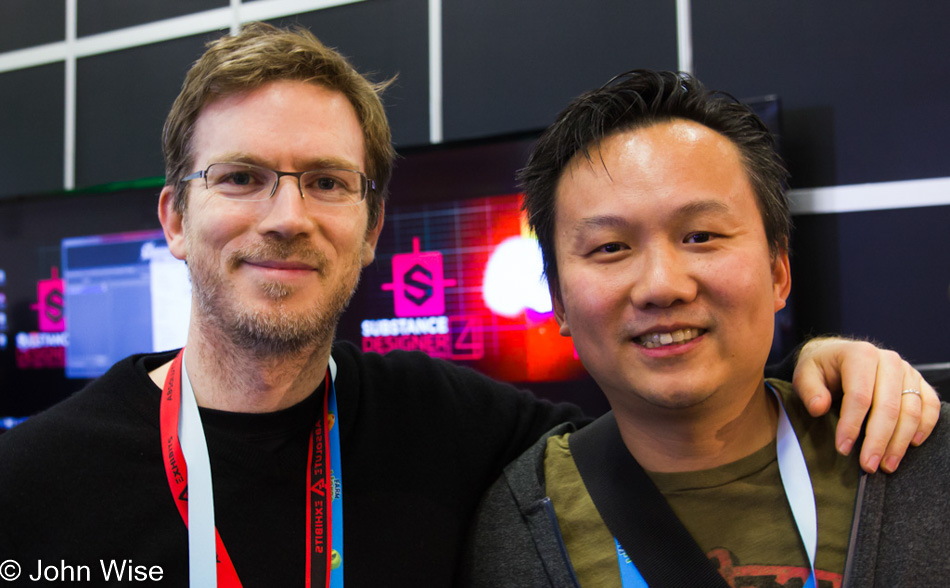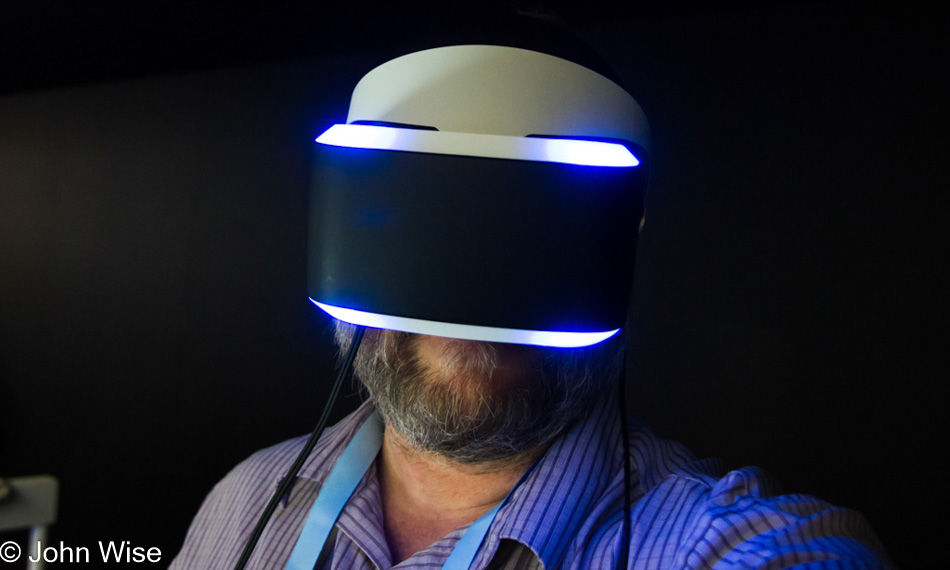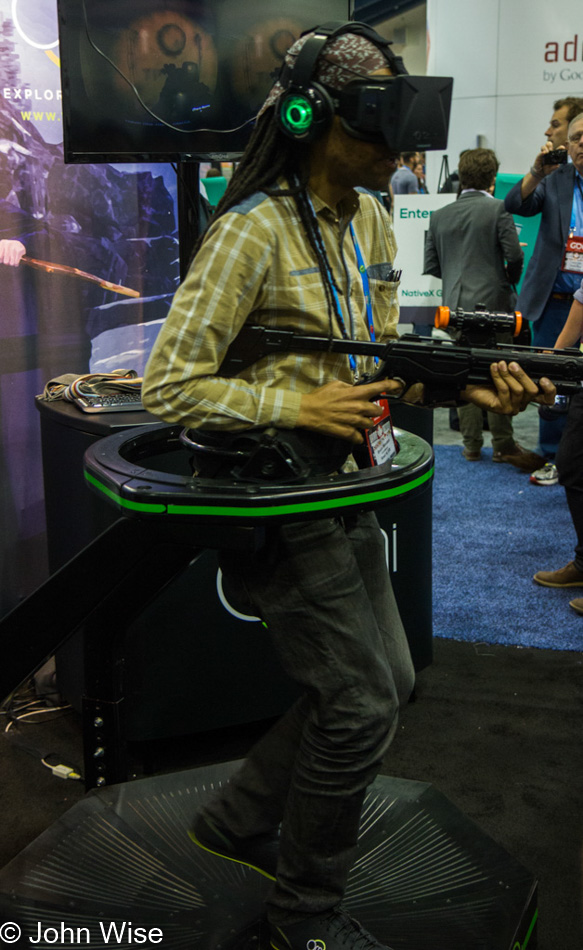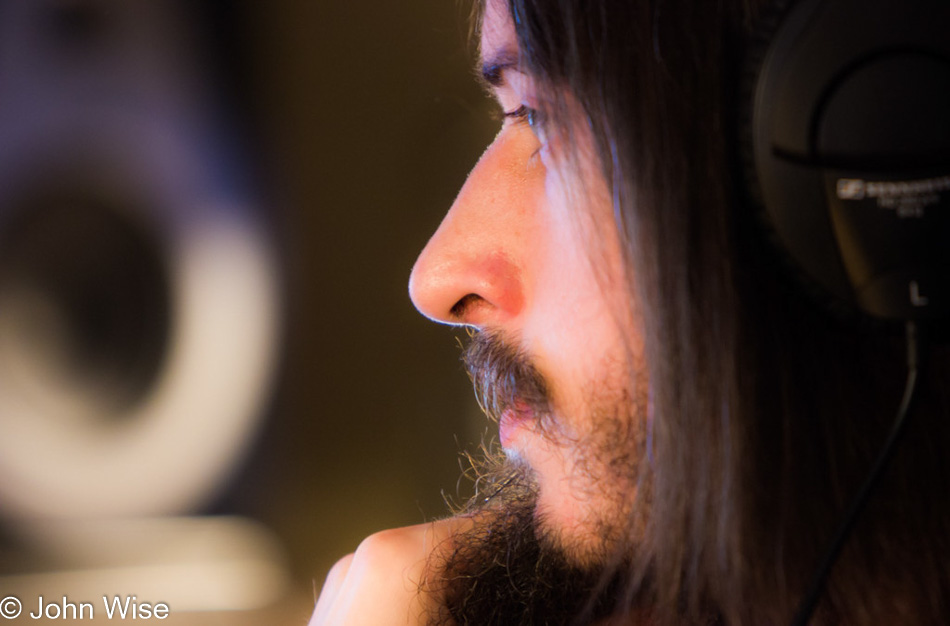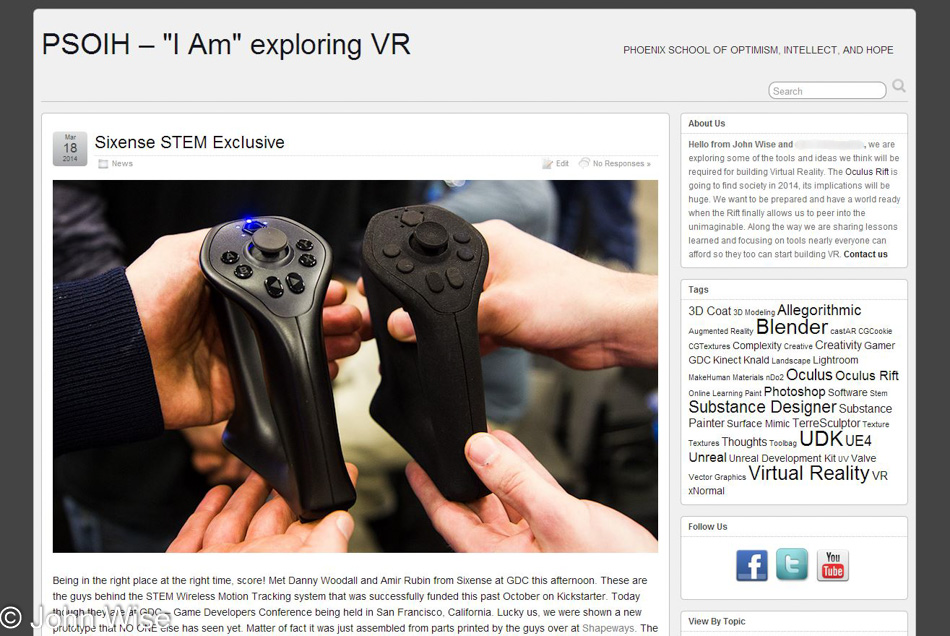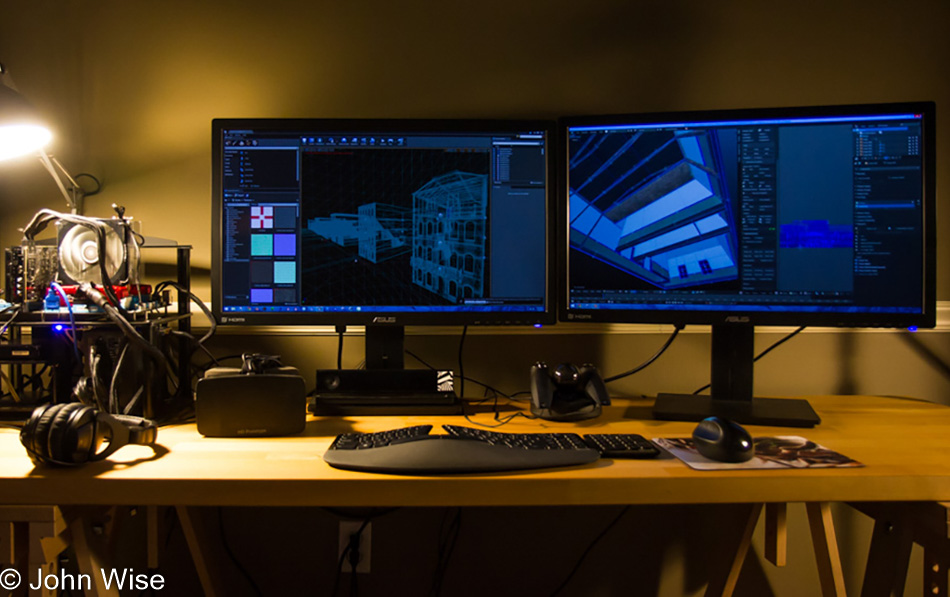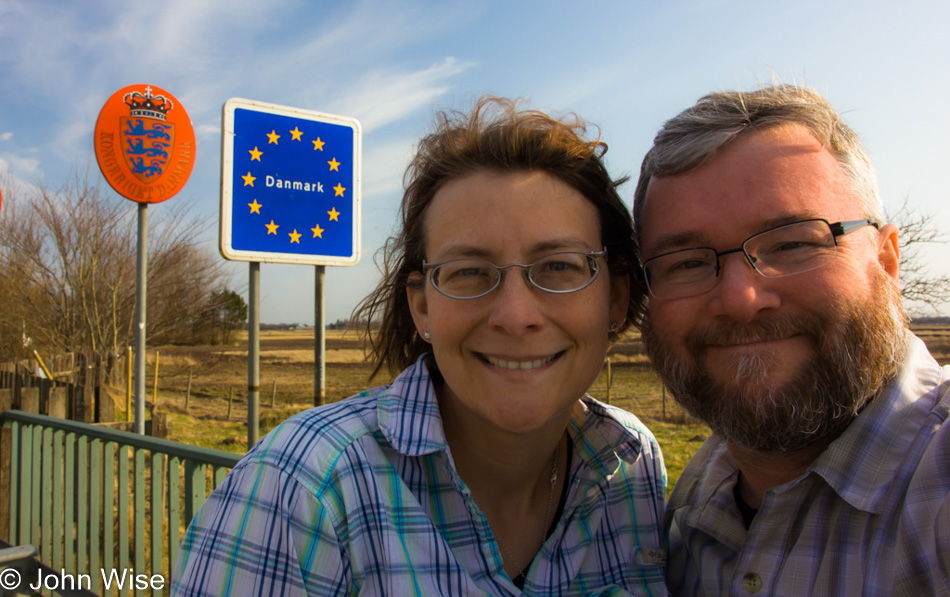
The guy on the right that’s me, John Wise the Founder of Timefire. The woman with me is my wife, Caroline. Not only were we in Germany on the Danish border in part to celebrate my 50th birthday, but we were also only a month away from returning home and taking possession of an Oculus Rift. So, in a sense, this is the last time I had a “normal” photo taken of me, as life is now measured in B.O. and A.O. (not Body Odor and Ambient Occlusion – but as Before Oculus and After Oculus). I don’t think anyone with an imagination who has looked into the Oculus headset has come away from it untouched. For me, it was apparent that Virtual Reality was finally on track to do something big, but what I couldn’t know last May was just how much.
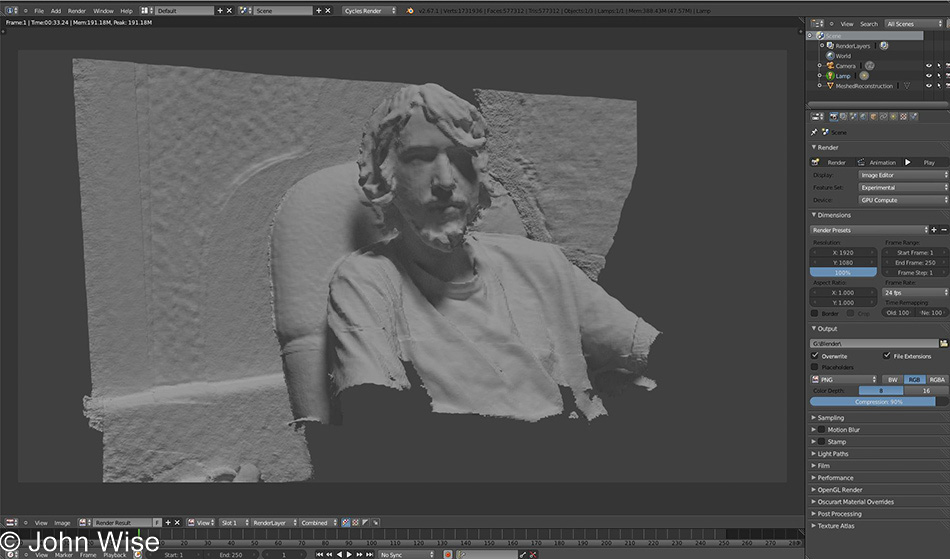
Almost a year ago, a friend and I started working on some experiments to see what things we built would look like in VR; we weren’t disappointed. While the first Oculus Rift headset had ginormous pixels and enough motion blur to make the most stoic queasy in minutes, it was easy to see that Palmer Luckey was onto something. So we started learning all we could about what might be entailed in building a Virtual Reality environment. We embarked on learning about low-poly and high-poly meshes. UV unwrapping was easy compared to our struggles with lightmaps, which seemed like evil magic that only wizards could master. Being noobs, we would have to learn all we could about the difference surrounding 256, 512, 1024, 2k, and 4k textures and how did these work as a “Texture Atlas?” Level of Detail is an important factor to game devs, Breaking Bad didn’t teach us anything about cooking up a good batch of LOD. How about terrain and plants? Well, how many ways to you want to learn about how to make either? We’ll also have to take a look at motion capture, animation, rigging, character development, lighting, weather, and a host of other functions before we begin to start feeling competent about authoring a game.
Just as we think we’re getting somewhere, events conspire to deliver a huge setback while simultaneously offering a springboard into the future. Seeing as much of what we were playing with was “practice,” when the game industry started to make these transitional moves we were witnessing, we didn’t have a lot to scrap. First up was ditching bitmap textures and learning to dance with the new kids on the block – procedural textures and Physically Based Rendering (PBR). In December, I took a road trip to Hollywood for the first meeting with the great minds of Allegorithmic. That night, I was introduced to the Alpha version of Substance Painter. The writing was on the wall; we were going through a monumental shift for the game developer; little did I know that this was just the tip of the iceberg.
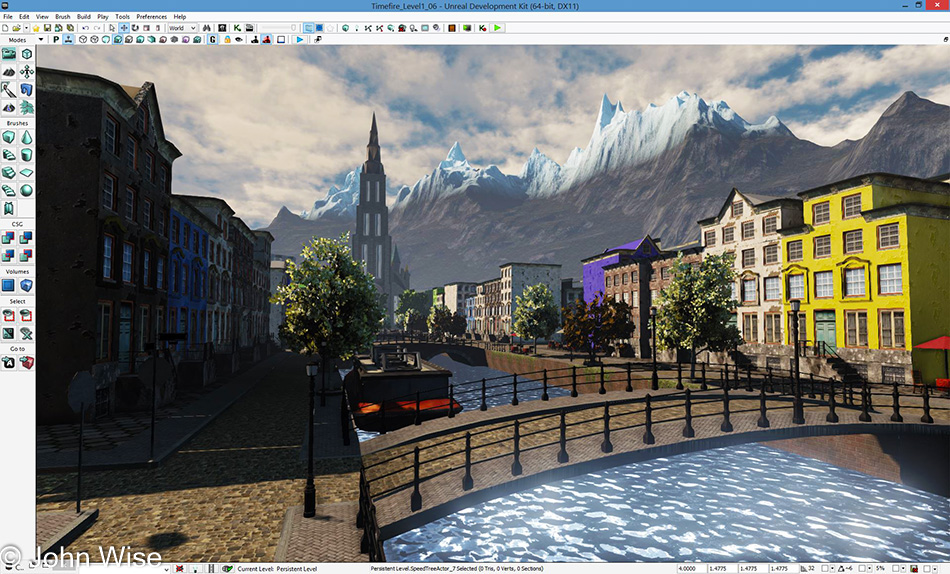
After learning from Oculus that Valve Corporation was hosting Steam Dev Days the following month in Seattle, Washington, I took a shot and wrote Gabe Newell to inquire about gaining an attendance code that would allow me to register for the event. Within two days, I was in, and tickets and hotel reservations were made. Following Gabe’s keynote and the unsuccessful attempt to ask the guy a question, I followed the founder of Valve out to the lobby, where I had the opportunity to talk with him for a few minutes. This was my lucky 50th birthday year; Gabe took me over to the “Booth” – the VIP room where a small handful of lucky industry people would get to be witness to the work Valve had been doing on their own VR headset. Standing there, I was introduced to Michael Abrash, Tom Forsyth, and Atman Binstock. It was Atman who led me through the demo. OMG, this VR is amazingly tear-inducingly overwhelming.
Then, in March, another shoe dropped in the cascade of events that convinced me it was time to take action; Epic released Unreal Engine 4 at the incredibly low price of only $19 a month, and it was available to everyone immediately. Oh, that and Oculus showed Developers Kit v.2, which was utilizing some of the magic that Valve was sharing with them. In retrospect, it is obvious why Mark Zuckerberg would be so blown away by the technology that he would have to buy Oculus. It would also be that pivotal moment following GDC in March that would have me recognizing I would have to transition from a hobby project to a serious company armed with the right tools and staffing to be able to deliver a compelling story and environment.
And so Timefire was born.
My previous work includes active participation in the German beginnings of Techno music and bringing the first 3D computer graphics to the European continent. Along the way, my interest in communication and video arts saw me working with Nirvana (1989), The Sugarcubes (Bjork 1988 and 1989), Henry Rollins, Psychic TV, The Pixies, Nitzer Ebb, and many others. Upon my return to the United States after a 10-year extended sojourn, I opened one of the first 25 Internet Cafes on Earth in Scottsdale, Arizona, before moving between various tech companies, culminating with my initiative to build the world’s first sub-quarter million-dollar clustered supercomputer with Jeffrey Rassas – a current partner and the guy who has lead the fundraising that is allowing us to compete in building what we hope will be a viable and interesting VR platform. My current interest in VR was originally born over 20 years ago when the expense and poor quality limited anyone from making a serious attempt at bringing the technology to the masses. Today, those limitations have been removed, and the world is about to undergo a fundamental and profound shift as we are thrust into the FUTURE.
